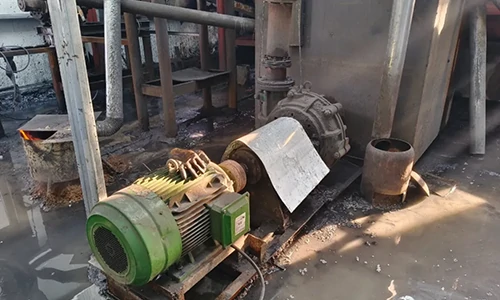specialization Service-oriented Quality
“After three hours of continuous heavy rain, drainage pumps all shut down due to incorrect parameter settings, paralyzing traffic in the entire city!” According to statistics, 75% of drainage pump failures are caused by improper parameter configuration. The rainy season is coming soon, and frequent rainfall and the resulting drainage challenges often become important issues that city managers must face. This article reveals 4 key parameter adjustment techniques that can directly improve the reliability of the drainage system without the need for additional tools!
Causes of drainage pump strike
The core cause of drainage pump “strike”: 4 parameter misunderstandings
1. False lift
– Error: The actual required head is 15m, but the pump is set to the maximum rated head of 25m
-Consequences: The motor was overloaded and the windings burned out after the heavy rain lasted for 1 hour
– Judgment standard: If the operating current exceeds the rated value by 10%, recalibration is required.
2. Traffic overload
-Typical problem: The pump flow rate is 2000m³/h, but the pipeline only supports 1200m³/h
-Data: Overload operation causes a 40% drop in efficiency and increases the risk of impeller cavitation by 3 times

3. Rigid start and stop thresholds
-Fatal flaw: It starts only when the water level reaches 1.5m, and drainage is delayed by 30 minutes during heavy rain
-Scientific threshold: Pump start water level = pipe diameter × 0.6 (e.g. DN500 pipe corresponds to 30cm)
4. Power distribution is unbalanced
-High-risk phenomenon: Multiple pumps are running at full load at the same time, and the grid voltage drops suddenly to 360V
-Critical value: When the voltage is lower than 380V, the motor output torque drops by 28%
Parameter tuning tips
Four major parameter adjustment techniques (with calculation formula)
Tip 1: Accurate calculation of lift
-official:
Actual lift = vertical lifting height + pipeline friction loss + local resistance loss
– Pipeline friction loss (meter) = pipeline length × friction coefficient (PVC pipe takes 0.02-0.03)
– Local resistance loss (meter) = number of valves/elbows × equivalent length coefficient (90° elbow takes 0.5)
-Case: A pump station corrected the head from 25m to 18m, reducing power consumption by 22%

Tip 2: Dynamic flow control
-Three-level control strategy:
① Light rain mode (<30mm/h): single pump operates at 70% flow rate
② Heavy rain mode (30-50mm/h): dual pumps in parallel + frequency reduction to 85%
③ Extreme mode (>50mm/h): Enable backup pumps + close valves in non-core areas
-Key parameters:
– Maximum flow rate of pipeline = π×(pipe diameter/2)²×flow rate (recommended flow rate 1.5-2.5m/s)
Tip 3: Start-Stop Threshold Optimization Formula
-Golden Rule:
– Pump start water level = 0.3 x pipe diameter (e.g. DN600 pipe pump start water level 18cm)
– Pump stop water level = pump start water level × 0.4 (to prevent frequent start and stop)
-Advanced solution:
– Install a water level change rate sensor and start in advance when the water level rises faster than 5cm/min.
Tip 4: Power distribution pitfall avoidance guide
-Four-step power stabilization strategy:
① Peak-shifted pump start: start each pump at 15-second intervals (to reduce the impact of starting current)
②Base load: The variable frequency pump maintains 60% power operation
③ Peak response: The power frequency pump is put into operation when the grid voltage is >390V
④Real-time monitoring: Install a voltage meter and adjust immediately if the fluctuation exceeds ±5%
Real-life examples
Actual combat case: Municipal pump station zero failure record
Technical report of a city drainage management office:
1. Problem retrospection: The original system tripped after working continuously for 2 hours under a rainfall intensity of 50mm/h
2. Renovation measures:
– The lift was revised from 22m to 16m (actual vertical lift 12m + pipeline loss 4m)
– Set three levels of flow control (800/1200/2000m³/h)
– Pump start water level lowered from 1.2m to 0.5m
3. Achievements: Withstood three consecutive red rainstorm warnings and reduced power consumption by 18%

Rainy season must-check list

1. Mechanical system:
– Check the clearance between the impeller and the pump casing (standard value 0.3-0.5mm)
– Check the bolt preload (±5% of the torque wrench setting)
2. Electrical system:
– Measure insulation resistance (>1MΩ is acceptable)
– Check the setting value of thermal relay (1.05-1.2 times of rated current)
3. Control system:
– Test float switch sensitivity (response time < 3 seconds)
– Calibrate pressure sensor (error range ±1.5%)
Parameter accuracy determines the life and death line of drainage!
Implement these 4 adjustments immediately, and you won’t have to worry about “watching the sea” during the rainy season!

